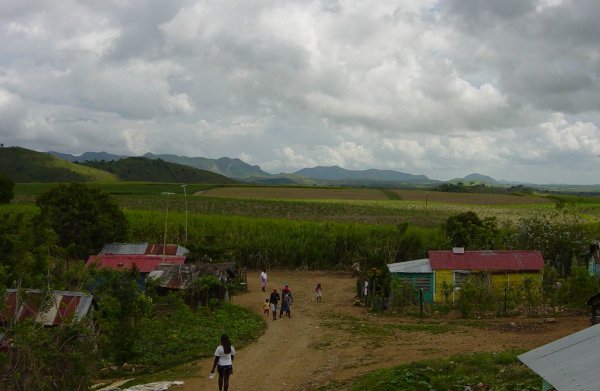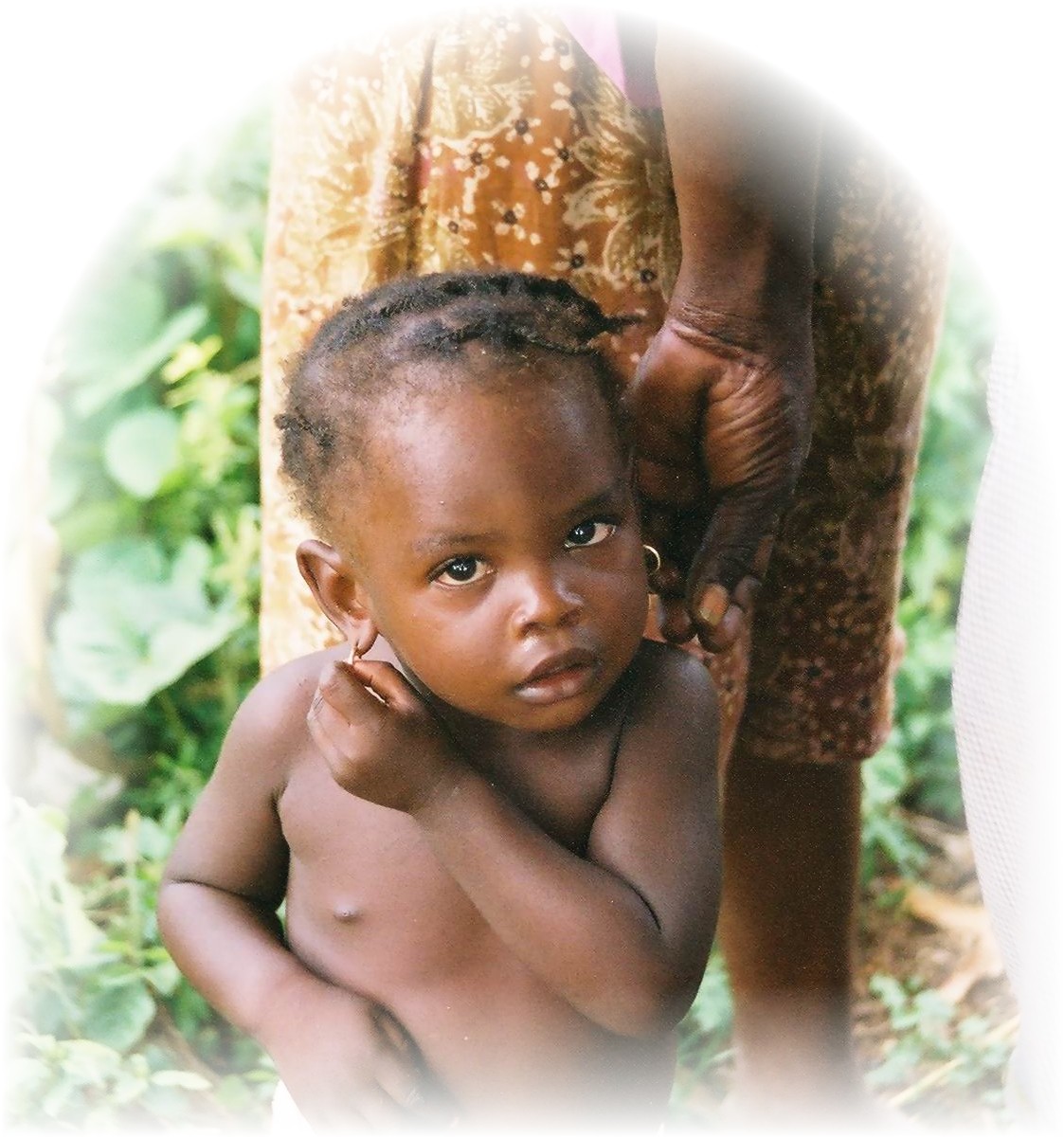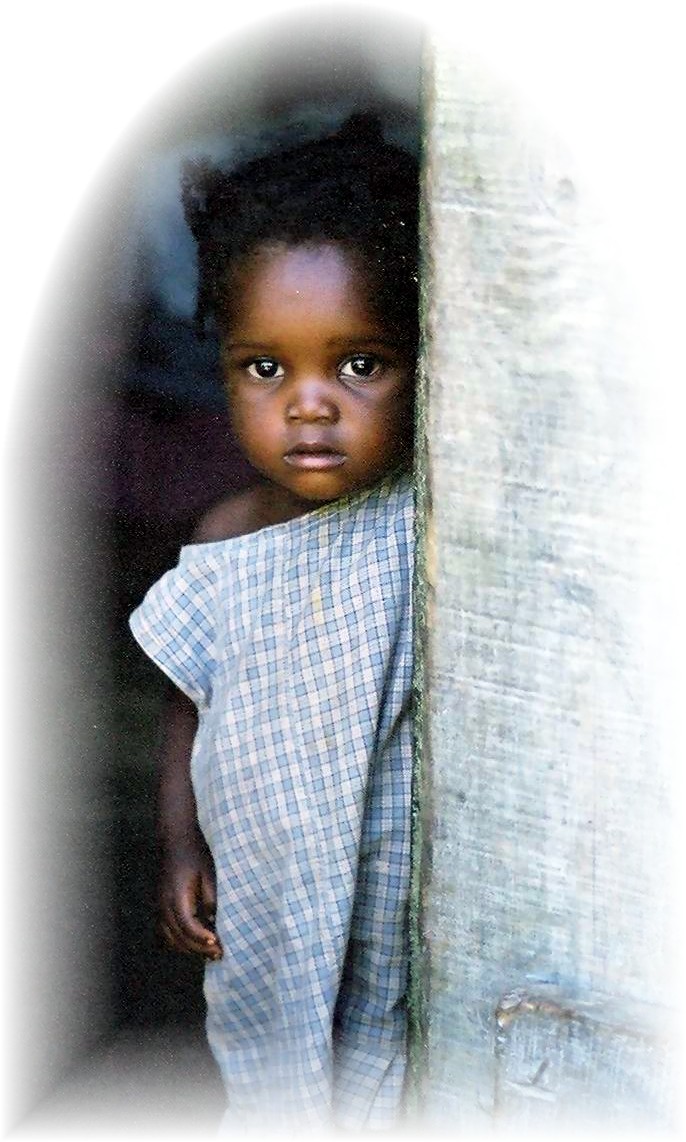
Related Links
American Baptist Churches-International Ministries
Dominican Culture
Las
Culturas
Travel
Facts
dr1
|
|
Medical
Clinics |
![]()
***Medical Symposium in La Romana on May 28-30, 2007***
Please join us in discussing the future of medical work in the bateyes.
 Medical
clinics in the bateyes and barrios around La Romana were established long
before there was a hopsital building. The original goal of the mission
was to provide healthcare to those persons, mostly of Haitian descent,
that were living on the bateyes cutting sugarcane. The late Rev. Jean-Luc
Phanord had a vision of ministering to Haitians living in the Dominican
Republic through both medical and spiritual services. Thus, many of the
bateyes where medical clinics are held also have a church building established
by the Haitian Missionary Baptist Church, Inc. (also known as Maranatha).
These same buildings, along with local schools and shelters serve as the
medical clinic for American teams providing healthcare.
Medical
clinics in the bateyes and barrios around La Romana were established long
before there was a hopsital building. The original goal of the mission
was to provide healthcare to those persons, mostly of Haitian descent,
that were living on the bateyes cutting sugarcane. The late Rev. Jean-Luc
Phanord had a vision of ministering to Haitians living in the Dominican
Republic through both medical and spiritual services. Thus, many of the
bateyes where medical clinics are held also have a church building established
by the Haitian Missionary Baptist Church, Inc. (also known as Maranatha).
These same buildings, along with local schools and shelters serve as the
medical clinic for American teams providing healthcare.
Through missionary, Kristy Engel, and many volunteers, a social service program has started to try and meet the needs of patients found in the batey medical clinics who need further care than can be provided during a clinic setting.
The Good Samaritan General Hospital hosts over 40visiting work teams from various American churches and hospitals each year. That number changes in accordance to disaster relief (as with hurricane Georges) or political turmoil around the world (the war in Iraq). Most of the teams that visit La Romana bring at least a small medical contingent and a supply of basic medicines which are used in the clinics. We provide assistance with local customs officials in receiving the medicines as well as medical equipment.
For those
interested in what medicines the hospital is able to receive, we have
included a general list of medicines at the
bottom of this page. Those teams that come only for the construction component
often bring toothbrushes, toothpaste, soap or shampoo to give out as "parting
gifts" at our next clinic.  Many
teams have had "pill parties" or "parting gift parties"
at their church prior to visiting the Dominican Republic so that the entire
church, or those interested, can be involved with the sending and equipping
of medical teams. These "parties" usually consist of counting
and pre-bagging medicines that are used quite frequently in the clinics
or packing the supply bags that will come with the team. To learn the
best way to organize this, we encourage you to contact one of our medical
team leaders listed on the "Contact Us"
page of this website.
Many
teams have had "pill parties" or "parting gift parties"
at their church prior to visiting the Dominican Republic so that the entire
church, or those interested, can be involved with the sending and equipping
of medical teams. These "parties" usually consist of counting
and pre-bagging medicines that are used quite frequently in the clinics
or packing the supply bags that will come with the team. To learn the
best way to organize this, we encourage you to contact one of our medical
team leaders listed on the "Contact Us"
page of this website.
If you are
reading this website for the first time and wanting to know what exactly
it is that we do in our medical clinics, here you go...
(top)
 As
stated earlier, a visiting medical team of between 10-20+ persons will
arrive with medicines and supplies, usually on a Saturday afternoon. They
are picked up at the airport by our hospital bus (a yellow school bus!)
and driven to the dormitories to begin unpacking. Usually that first night,
if they don't arrive too late, they begin sorting medicines from the bags
and pre-packaging frequently used medicines. Sunday morning is spent at
the church service of the Haitian Missionary Baptist Church or in a batey church and then many
teams spend the afternoon at a local beach, relaxing before a busy week.
As
stated earlier, a visiting medical team of between 10-20+ persons will
arrive with medicines and supplies, usually on a Saturday afternoon. They
are picked up at the airport by our hospital bus (a yellow school bus!)
and driven to the dormitories to begin unpacking. Usually that first night,
if they don't arrive too late, they begin sorting medicines from the bags
and pre-packaging frequently used medicines. Sunday morning is spent at
the church service of the Haitian Missionary Baptist Church or in a batey church and then many
teams spend the afternoon at a local beach, relaxing before a busy week.
Monday morning
starts early with breakfast at 7am and then loading the bus at 8am to
the sound of Christian merengue music from our church band's new CD. Hopefully
by 8:30am we are on the road to the batey. (A batey is a village of sugarcane
workers, usually Haitian, and located in the countryside in the middle
of sugarcane fields.) The trip to the batey can take anywhere from 30min
to an hour to arrive, driving mostly through unmarked roads in the sugarcane
fields. We are lucky to have a driver, Salvador, who knows almost every
road in the area since there are about 130 bateyes around La Romana!!
(top)
The clinic
starts with a devotion in both English and Spanish and then registration
of patients begins. The patients have tickets prior to our arrival, usually
at least one week in advance, and they are called by number to list their
complaints on a 4x6 index card, soon to be given to the medical staff.
A long line soon starts at the front door of the clinic. Everyone wants
inside at the same time and no one wants to wait! One of the most critical
parts of the clinic is our "bouncer" at the front door who tries
to keep people in order and also weigh the patients as they come inside. Once
the patient is inside, they must wait for one of the medical staff to
see them. The staff are usually arranged on benches with the patient in
front of them and an interpreter to the side, translating either Spanish
or Creole for the doctor. A lot of the patients come with the same complaints,
"pain all over," "headache," "stomach ache,"
and "skin infection." Most of the people we see are not critically
ill, but many do suffer from hypertension and diabetes. Often, these illnesses
lead to more serious complications. Finally, after the consultation is
complete, the patient goes to the pharmacy and recieves the prescribed
medicine as it is available.
Once
the patient is inside, they must wait for one of the medical staff to
see them. The staff are usually arranged on benches with the patient in
front of them and an interpreter to the side, translating either Spanish
or Creole for the doctor. A lot of the patients come with the same complaints,
"pain all over," "headache," "stomach ache,"
and "skin infection." Most of the people we see are not critically
ill, but many do suffer from hypertension and diabetes. Often, these illnesses
lead to more serious complications. Finally, after the consultation is
complete, the patient goes to the pharmacy and recieves the prescribed
medicine as it is available.
The basic
premise of our work on the bateyes is to relieve the suffering that we
can, TODAY. Many medical personnel can become frustrated or bothered by
the fact that we may not be able to do anymore than alleviate some pain.
The key to remember is that even our "band-aid medicine," as
some have termed it, has increased the level of health on the bateyes.
We also receive teams that are performing tubal ligations, minor surgeries
and cataract surgeries. We have programs for reduction of ![]() parasitic
infections, family planning, social services and evangelization. There
are fewer serious infections than there were three years ago, a malnutrition
program started by a church in Kansas City is ministering to the needs
of over 1,000 children now and we are visiting over 100 different bateyes
and barrios every year! Praise God!! As Mother Theresa said, "We
can do no great things- only small things with great love."
parasitic
infections, family planning, social services and evangelization. There
are fewer serious infections than there were three years ago, a malnutrition
program started by a church in Kansas City is ministering to the needs
of over 1,000 children now and we are visiting over 100 different bateyes
and barrios every year! Praise God!! As Mother Theresa said, "We
can do no great things- only small things with great love."
Health Promoters and Projects (top)
As previously stated, the Good Samaritan Hospital, through the "Sponsor a Promoter" program, has hired almost 50 health promoters who offer first-line health care to people living in the bateyes and barrios around La Romana. Each of these men and women offer a connection to patients in the bateyes and services provided at the Good Samaritan Hospital. Although not every batey or barrio is part of the malnutrition program, those who are part of the program manage the distribution of vitamins and de-worming medicine as well as the weights of the children in the program. It is the health promoter that helps distribute tickets for a medical clinic and then assists in the running of that clinic when we travel to their location. Doctor Adrianna is currently managing the health promoter program as well as overseeing the malnutrition program. She also plans and implements promoter training workshops once a month. If you would like to participate in a training workshop, please contact Kristy Engel about subject matters and times. We could offer specific days during your teams visit or if several individuals would like to travel here specifically for this purpose, we could plan several days of training. Areas of current interest are nutrition, HIV/AIDS training, TB training, chronic disease management (such as diabetes and hypertension), water purification, family counseling (with a Christian emphasis) and crisis counseling. It is the wish of the Good Samaritan Hospital to have a paid health promoter in all of the bateyes and barrios where we work (well over 100!). If you have an interest in this, please contact Moises Sifren the hospital administrator.
During the year, The Good Samaritan Hospital is also able to offer many "special" clinics or programs. These have included tubal ligations, general adult surgery, reconstructive surgery, pediatric urologic surgery and eye surgery. If you have a medical team that can provide a specialty service, please contact Kristy Engel to begin planning your visit.
Another option for a medical team is provide in-service training sessions for medical and nursing staff. We are always open to professionals with specialty training to offer their expertise to our staff. An interchange of information has positive outcomes for both the teacher and the student. Many staff who have come here to teach, leave here having learned more about the cultural differences in medical practice in the Dominican Republic versus the United States. Some current areas of interest in the hospital are: pediatric intensive care, adult intensive care, OR protocol/technique, HIV/AIDS, management of chronic disease, ER protocol and (believe it or not!) insurance and third party payors. We also have needs in our lab and pathology departments so if there is equipment in your facility that could be donated, please contact Moises Sifren, hospital administrator.

The following information is included for teams who are planning a trip to La Romana and need some guidelines for the medical work. These are materials that I have previously included for team preparation with past groups. Please feel free to email me if you have any questions regarding the content.
- Needed Medication List
- Referral Policy and Reference forms for the Good Samaritan Hospital
- Dress Code and General Rules for teams
- Expenses
- Links to organizations that provide discounted medical supplies and/or medicines: Medicines For Humanity and International Aid.






